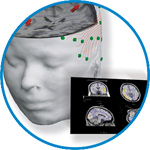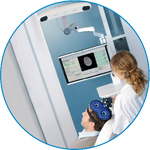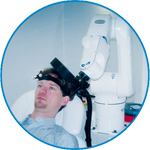- Home
- About ANT
-
Products

asa
asa is a highly flexible EEG/ERP and MEG analysis package with a variety of source reconstruction, signal analysis and MRI processing features.
.jpg)
eego mylab
The new frontier in multimodal brain research. With up to 16 kHz sampling rate, 256 EEG channels and unique software features, eego mylab gives you an unprecedented in-depth understanding of the human brain.

eego sports
eego sports offers complete freedom to collect high-density EEG data, bipolar EMG signals, and a variety of physiological sensor data, wherever and whenever required, with publish quality data in less than 15 minutes!

waveguard net
The waveguard net sets a new standard for research applications requiring high-density EEG data acquisition with quick preparation time, high flexibility, and subject comfort.

visor2
Our new and upgraded visor2 solutions integrate all the latest technologies for navigated rTMS, dual-coil navigation support, EEG-TMS recordings and pre-surgical evaluation for the highest quality in research and clinical procedures.

powerMAG ANT
The PowerMAG ANT 100 rTMS stimulator is designed for the specific needs of high-end TMS applications. Powerful high-frequency TMS as well as high precise single pulse and repetitive pulse protocols are combined in one single device.

xensor
xensor offers the solution for digitization of 3D electrode positions. xensor takes care of the whole procedure; it records, visualizes and stores positions acquired with a dedicated digitizer.

waveguard original
waveguard original is the cap solution for EEG measurements compatible with fMRI, MEG and TMS system. Use of active shielding guarantees performance in even the most demanding environments.

waveguard connect
waveguard connect EEG caps are a perfect match for hospitals and institutes aiming at reliable EEG, maximum uptime and great patient comfort! For optimal signal quality, the electrodes are made of pure, solid tin.

waveguard touch
waveguard touch is a dry electrode EEG cap. The unique Ag/AgCl coated soft polymer electrodes provide stable, research-grade EEG signals while maintaining subject comfort. The combination of these innovative dry electrodes and the industry-leading waveguard cap makes waveguard touch the best solution for dry EEG.

smartmove
smartmove allows planning of a complete TMS session ahead by defining stimulation sites based on anatomical MRI information and functional information like fMRI, PET or EEG/MEG.
Stay - References
- Support
- Events
- News
- Contact Us
You are here
Cross-frequency interactions between frontal theta and posterior alpha control mechanisms foster working memory
Cross-frequency interactions between frontal theta and posterior alpha control mechanisms foster working memory
Year:
2018
Journal:
Neuroimage
Abstract:
Neural oscillatory activity in the theta (4–8 Hz) and alpha (8–14 Hz) bands has been associated with the implementation of executive function, with theta in midline frontal cortex and alpha in posterior parietal cortex related to working memory (WM) load. To identify how these spatially and spectrally distinct neural phenomena interact within a large-scale fronto-parietal network organized in service of WM, EEG was recorded while subjects performed an N-back WM task. Frontal theta power increase, paralleled by posterior alpha decrease, tracked participants' successful WM performance. These power fluctuations were inversely related both across and within trials and predicted reaction time, suggesting a functionally important communication channel within the fronto-parietal network. Granger causality analysis revealed directed parietal to frontal communication via alpha and frontal to parietal communication via theta. Results encourage consideration of these bidirectional, power-to-power, cross-frequency control mechanisms as an important feature of cerebral network organization supporting executive function.
© Copyright 1999 - 2024 ANT Neuro |
www.ant-neuro.com |
Terms of Use |
Privacy Statement |
Contact |
USA Customers

 Read more
Read more.jpg)




